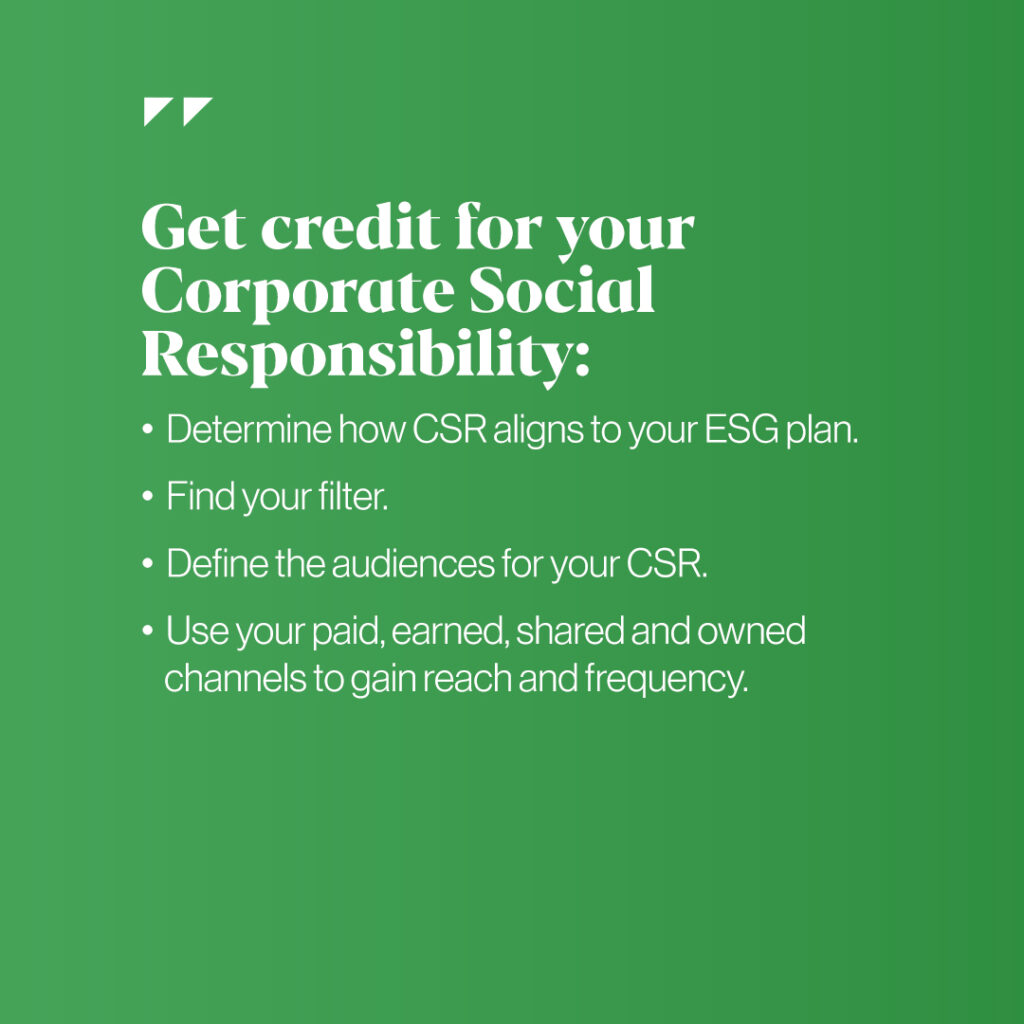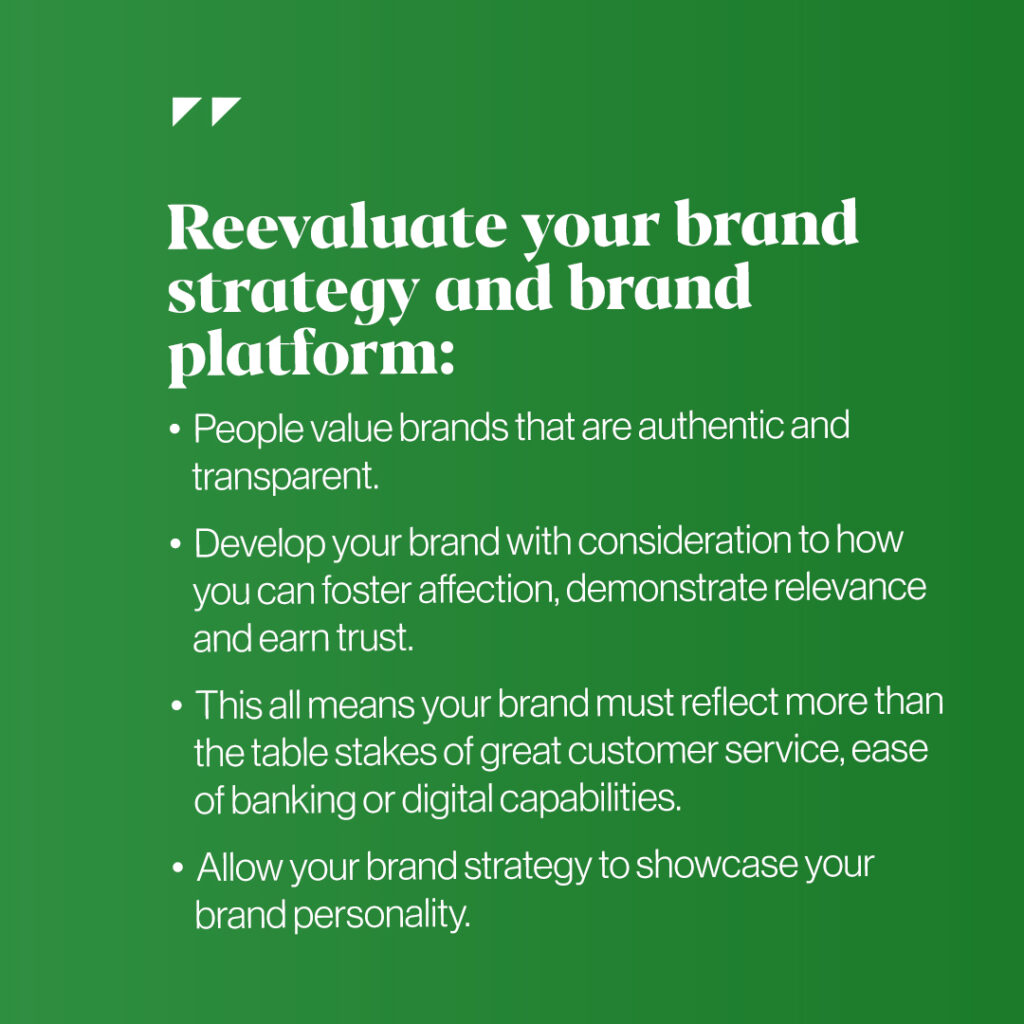Attracting younger generations is no longer just a matter of strong advertising. Now, it’s a matter of strong beliefs.
A whopping 83% of millennials are looking for brands that align with their values, with their Gen Z counterparts following suit. Both groups are less likely to do business with companies whose views don’t align with theirs—or with those who don’t speak out at all. And with their billions in purchasing and investing power, it’s incredibly important to both gain and retain their loyalty.
The odds are high that your brand marketing reflects at least some of what your brand stands for. But to ensure that it resonates with your target audience—particularly the younger generations—you’ll need to check that you’re emphasizing the right information. In wealth management, you’re probably highlighting your experience, expertise and ability to customize for the personal journey. Banks and credit unions may be focusing on great customer service, community involvement, promotional account-opening incentives or interest-rate bumps. If you’re a fintech, maybe it’s all about your open APIs, fast integrations or security.
No matter your organization’s financial focus, know that millennials and Gen Z are seeking to partner with financial brands that champion sustainability, equity, and transparency—all the values that take banking from a transactional necessity to a meaningful partnership. With purpose and values as two cornerstones of successful marketing, use them to differentiate in a way that doesn’t require a complicated transformation plan. Whether you’re a credit union or a community bank, a consumer-facing or backbone fintech, consumers care. They care about experiences. They care about working with companies that share their values. They care about companies with missions and visions that align with their new priorities. A strong brand ethos isn’t just a nice-to-have—it’s the foundation of trust and loyalty.



So, what can you do?
Emphasize your mission, vision and values.
- If you don’t have them defined, prioritize this activity! Workshops with key stakeholders from across the organization with different perspectives are key to teasing out why you exist today. Not just the function of delivering financial services, but in the bigger picture, the thing that gets each employee energized to come to work every day. Your vision should reflect your future state, about 10 years out. It’s the thing every employee in your organization is striving to help you achieve. Your values are a direct reflection of who you are. Not who you aspire to be, but what are the characteristics that make your organization the place it is.
- Share your company values, and not just on your “About Us” page. Use them to help showcase how you hire, retain, and grow your talent. How your mission and vision help to inform strategic choices around investments, product development and business strategy.
- Convey your focus on diversity, equity, inclusion and belonging. What are you doing? What are you planning? How do your current and future plans help to reflect the communities and customers you serve?
- Showcase your culture. Truly dig in to find and illustrate what makes your organization and your people special. Just saying you have a great culture isn’t enough anymore. You must illustrate what makes your culture different from the bank or credit union down the block.
Make sure you get credit for your CSR.
- Determine how CSR aligns to your ESG plan (or if it aligns).
- Find your filter—determine what CSR activities align best with your company’s values and purpose, and really focus on them. Then use this alignment as your strategic filter for future activities and investments.
- Define the audiences for your CSR. Is it current or prospective employees? The community? Customers or prospective customers? Investors? Determine what is most compelling for each of those audiences, then share what you’re doing and express your future plan.
- Use your paid, earned, shared and owned channels to gain reach and frequency; showing CSR can’t just be part of your annual report.
Reevaluate your brand strategy and your brand platform.
- People value brands that are authentic and transparent. Reflect on what matters to the people you do business with today, and the people you want to do business with tomorrow. The old marketing (and business) strategy of segmentation, targeting and positioning are crucial in making those enduing and authentic connections that drive loyalty (and customer lifetime value).
- Develop your brand with consideration to how you can foster affection, demonstrate relevance and earn trust. Consider how you’re creating a solid balance of rational and emotional messaging in your branding. People are not one dimensional; your branding shouldn’t be either.
- This all means your brand must reflect more than the table stakes of great customer service, ease of banking or digital capabilities. Connect to your values and purpose and create experiences, products and services that deliver. Every action, engagement, and experience you create is a chance to activate your brand purpose. To move beyond the functional and begin playing a role in the lives of the customers, communities and employees you serve.
- Allow your brand strategy to showcase your brand personality. With the entrance of neobanks and the ubiquitous nature of digital banking, gone are the days when you can solely rely on the kind branch manager
- to create lasting impressions. Leverage your creative brand platform to connect with people in ways that build affection, relevance and trust.
You don’t have to face this raging storm of change alone. Working with a partner who understands the day-to-day and higher-order challenges of being a successful financial institution can make all the difference. Mower’s financial services specialty team has extensive experience tackling all these obstacles and more.
If you’re interested in learning more about how we might help your financial brand, let’s talk.
